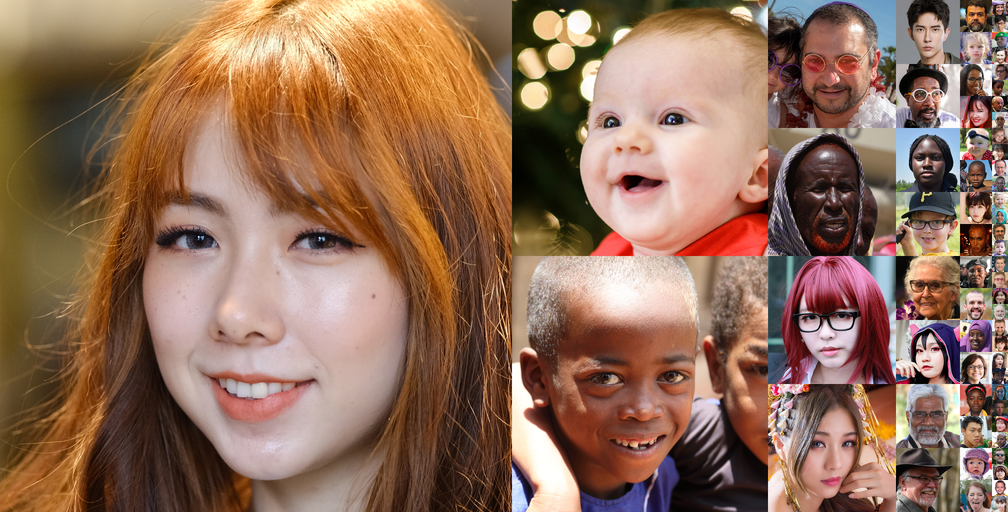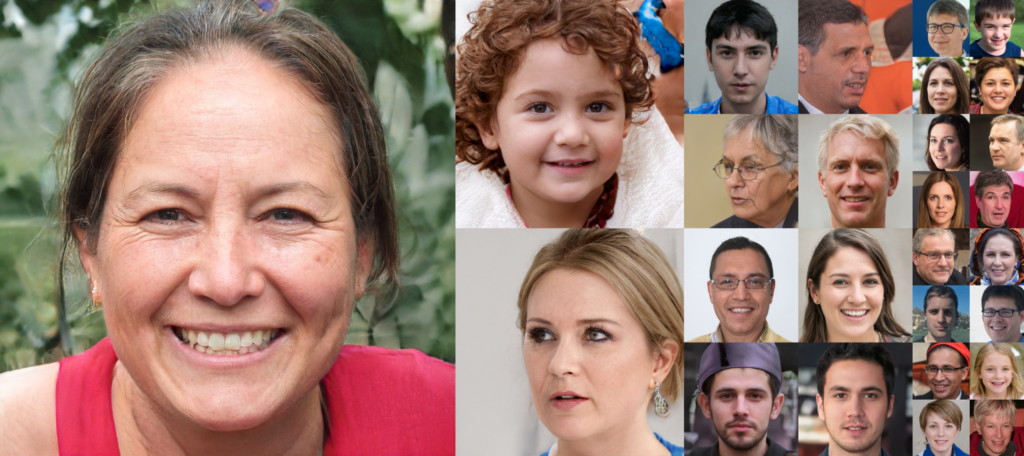When you see a picture of a person, you probably feel pretty confident you can spot something real or something Photoshopped—and you might.
But there’s a big difference between spotting a touched up photo vs. one that’s been created by a computer that looks completely real.
Take these photos for example. Which batch is real and which are fake?
We’re betting it’s not as easy as you thought it would be.


(The answers are the end of this blog.)
Why it matters
Using photos as part of a scam reduces people’s skepticism because we all tend to trust pictures.
We assume we’re seeing the person’s actual face and looking into their eyes—but these days, savvy criminals aren’t stealing someone else’s photo to use in a scam. Instead, they’re creating unique “photographs” of people who have never existed.
The software criminals are using is good, but it’s not perfect. Two professors, Jevin West and Carl Bergstrom, created an online quiz to help teach you how to identify a fake photo from the real thing.
Take the quiz
At WhichFaceIsReal.com you’ll be presented with two side-by-side images. Choose the one you think is real and find out if you’re right—and repeat as necessary.
You’ll likely find that, over the course of testing yourself, you get better over time.
What to watch for
The fake images above were made using open source software made by NVIDIA called StyleGAN. As good as it is, there are “tells” you start to pick up. Some glitches are more obvious than others, but you can learn to spot them.
West and Bergstrom, who created the quiz, say you should look for the following:
- Water splotches. The software often produces shiny blobs that look like water, especially in the background or where the hair and the background meet.
- Background problems. The software was designed to focus on faces, not backgrounds. Watch for strange looking companions next to the focus of the image, or odd chaotic backgrounds, or areas that almost look like a torn photograph.
- Eyeglasses. For now, the software doesn’t do a great job with eyeglasses. Sometimes they come out asymmetric, or sometimes they look jagged.
- Asymmetry. All faces are asymmetric, but the software can make people really uneven. For example, a mustache might be longer on one side than the other, earrings that don’t match, or collars that aren’t the same on both sides.
- Hair. Watch for disconnected strands of hair, or the hair might look too straight, or streaked, or there may be a halo or glow around someone’s head.
- Fluorescent bleed. Sometimes colors from the backgrounds bleed onto faces or hair.
- Teeth. They can look odd or asymmetric—or maybe there will even be too many, with “people” sporting three front incisors.
For examples of each of these troubles, head to the Learn section of whichfaceisreal.com.
What now?
Even if a faked image is perfect there is one way to know it’s real—ask for a second photo. Right now, the software algorithm is unable to generate multiple images of the same fake person.
Wait, what other photos are fake?
Expertly done Photoshop work trick people left and right, particularly over social media. As a result, it’s always good to be skeptical of “wow” images that go viral. Sure, some may be legit, but many of them are likely fake. For a little extra fun today, check out these collections of real vs. fake images:
- Gizmodo (from Feb 2019) and Gizmodo also rounded up 18 viral photos and videos from 2018
- BoredPanda
- 22 Words
Answers: The top batch are real faces (from the FFHQ dataset). The bottom images are all fake (from Karras et al. 2018). In the image at the top of the blog featuring four faces, the gentleman with the glasses is real.


